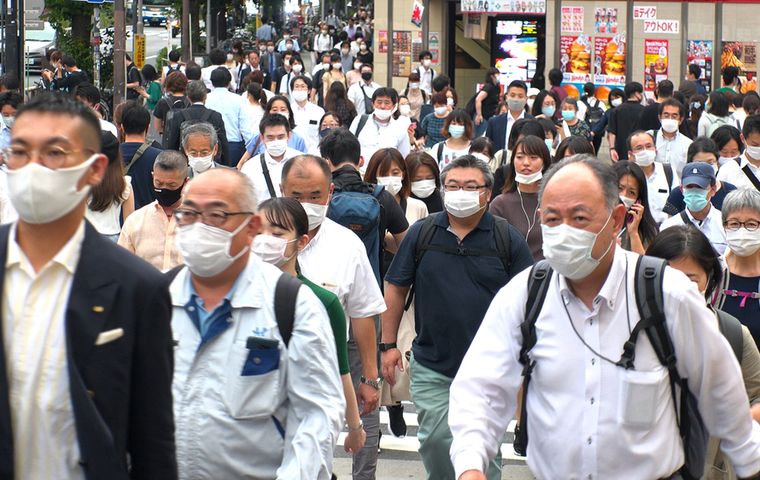A Mirror Reflecting Japan’s Future: The Child Population Declines for the 44th Consecutive Year
Related Articles
Unstoppable Decline — Japan’s Children Reach a Record Low

On May 4, 2025, Japan’s Ministry of Internal Affairs and Communications released population estimates that sounded a quiet but dire alarm for the nation’s future. As of April 1, the number of children under 15 stood at 13.66 million, marking a decrease of 350,000 from the previous year. This figure is the lowest since comparable records began in 1950. Japan’s child population has now fallen for 44 consecutive years since 1982, once again setting a new historic low.
The problem is not merely numerical. The proportion of children in the total population also dropped to 11.1%, down 0.2 points from the previous year — the lowest ever recorded. This ratio has now fallen for 51 consecutive years, showing that Japan’s demographic structure has entered a long-term, irreversible transformation. Whereas in 1950 children made up 35.4% of the population — over one-third — they now account for less than one-third of that share, a dramatic shift that reveals how profoundly Japan’s society has aged in just half a century.
Internationally, Japan’s situation is especially alarming. According to United Nations data, among 37 countries with populations exceeding 40 million, Japan’s proportion of children is the second lowest, behind only South Korea (10.6%). While declining birthrates are common across developed nations, Japan’s case stands out as particularly severe. The trend is nationwide: all 47 prefectures recorded declines in child numbers compared to the previous year, including major metropolitan areas like Tokyo, Kanagawa, and Osaka.
Regional differences persist — Okinawa has the highest child ratio at 15.8%, while Akita has the lowest at 8.8% — but even Okinawa’s figure fell by 0.3 points. No part of Japan is immune to this overwhelming demographic tide.
Perhaps the most telling statistic lies within the age structure of the child population itself. There are 2.22 million children aged 0–2, 2.5 million aged 3–5, and 5.8 million aged 6–11. This “inverted pyramid” means that the younger the age group, the smaller the population. Today’s infants and toddlers will form the parent generation 20 to 30 years from now. Because their numbers are already smaller than those of older children, even a miraculous rebound in the birthrate would not stop the total number of births from continuing to decline — a phenomenon known as demographic momentum.
The issue is no longer simply the rate of births, but the shrinking base population of women capable of bearing children. Japan’s demographic challenge has thus entered a deeper, structural stage.
Why Are Children Still Decreasing? — The Socioeconomic Roots
The causes behind Japan’s 44-year decline in the child population are not singular but complex, intertwined across economic, social, and cultural dimensions. At the heart lies economic insecurity and the altered life paths it has forced upon younger generations.
First, economic instability is the largest barrier. The prolonged stagnation following the burst of the asset bubble shattered Japan’s lifetime employment model and expanded non-regular work. While wages stagnated, childrearing costs — especially education — continued to rise, making marriage and parenthood feel like financial risks.
Data show a clear link between income and fertility: men in non-regular jobs have far higher unmarried rates than those in regular employment, and high-income households are significantly more likely to have three or more children. Parenthood has shifted from a natural life event into a “luxury” affordable only to the financially secure. For many young people, becoming a parent has effectively become an economic privilege denied to them.
Second, these economic shifts are tightly connected to changes in values surrounding marriage and family. The rise of later marriage and lifelong singleness are direct drivers of the falling birthrate. Surveys by Japan’s National Institute of Population and Social Security Research show that while many singles cite “not yet meeting the right person,” a substantial portion also name “insufficient funds for marriage” as a major factor. The desire to marry persists — but financial precarity prevents many from realizing it.
Third, Japan has yet to overcome its structural barriers to balancing work and family, particularly the burden that still falls disproportionately on women. Women’s university attendance and workforce participation have increased dramatically, yet corporate culture and household gender roles remain outdated.
Long working hours remain the norm, and childcare and household duties are still overwhelmingly carried by women. Male parental leave uptake remains extremely low, hindered by workplace stigma and lack of flexibility. Consequently, many women are forced into a “choice trap” between career and motherhood — a stalled revolution in gender equality.
Japan’s low birthrate is not the result of women choosing careers, but of a society that has failed to make careers and family life compatible.
Adding to this long-term decline, the COVID-19 pandemic accelerated the trend. Economic uncertainty led couples to delay marriage and childbirth, while social restrictions reduced opportunities to meet partners. The combined effects pushed both marriage and birth numbers down, turning Japan’s low fertility trend into an even stronger and seemingly irreversible current.
A Silent National Crisis — The Future Shaped by Declining Births
The 44-year decline in Japan’s child population is not just a statistical change — it is a silent national crisis, gradually but surely undermining the foundation of society. Its ripple effects extend across the economy, social security, and even Japan’s national viability.
The most direct consequence is the sharp decline in the working-age population (15–64). Labor shortages are spreading through every sector, particularly in healthcare, caregiving, construction, and logistics, threatening not only economic growth but also the maintenance of social infrastructure.
With skilled workers retiring en masse and too few young successors, Japan risks losing the industrial craftsmanship that has underpinned its international competitiveness — the very foundation of its “monozukuri” manufacturing culture.
The second major impact lies in the collapse of the social security system’s sustainability. Japan’s pension and healthcare systems rely on contributions from the working generation to support the elderly — a pay-as-you-go model. As the number of children (and thus future workers) declines while the elderly population continues to rise, the system faces structural imbalance. Future generations will bear heavier tax and premium burdens, while receiving lower benefits, deepening social inequality and generational conflict.
Economically, population decline means a shrinking domestic market, reducing consumption and discouraging investment. This stagnation traps the economy in a negative feedback loop — lower growth depresses income, which further reduces fertility, perpetuating decline.
As Japan’s economic scale contracts, so too does its global influence, eroding its capacity to lead or shape international agendas.
The crisis is even more visible in rural Japan, where young people continue migrating to cities, leaving behind rapidly aging and depopulating communities. Schools, hospitals, and public transport face closure, pushing many municipalities toward extinction.
This is not just an economic issue but a cultural and social collapse, eroding communities, traditions, and local identity. The growing dominance of elderly voters — a phenomenon dubbed “silver democracy” — risks prioritizing short-term welfare policies over long-term investments in future generations, further polarizing society.
In essence, Japan’s declining birthrate threatens not just its economy but the very fabric of its national identity.
Prescriptions for the Future — Japan’s Continuing Struggle Against Decline

In response to this mounting demographic crisis, successive Japanese governments have rolled out a wide range of policies. These efforts have focused on financial support for childrearing, work-life balance reforms, and expansion of childcare infrastructure. Yet the continued decline for 44 consecutive years shows that these measures have failed to reverse the trend.
Financially, child allowances have been expanded repeatedly — most recently with the abolition of income caps and extension of payments through high school age. Additional measures such as free preschool education, childbirth cost subsidies, and medical support were introduced to ease the direct financial burden of raising children.
Reforms promoting work-life balance — or hatarakikata kaikaku — have sought to curb excessive overtime, expand telework and flexible schedules, and increase male parental leave.
On the childcare side, Japan has worked to eliminate waiting lists for daycare and improve working conditions for childcare professionals, aiming for seamless “life-stage support” from marriage and childbirth through childrearing.
Yet despite massive policy investment, Japan’s fertility rate remains stubbornly low. These measures address the symptoms of the crisis but not its pathology.
Cash handouts may temporarily ease costs but cannot resolve the deeper economic insecurity of a generation facing stagnant wages and precarious employment.
Encouraging paternity leave is meaningless if long working hours and corporate norms remain unchanged. Japan’s policies have largely treated surface-level issues — not the structural roots of gender inequality and economic fragility.
Amid these challenges, a subtle but significant policy shift is emerging: a move from “reversing” population decline to “managing” it. While maintaining efforts to raise the birthrate, the government is increasingly focused on sustaining society within a shrinking population.
Policies such as raising the retirement age, automation (RPA), and expanding foreign labor acceptance illustrate this pragmatic turn. These are not strategies to increase the number of Japanese citizens, but to maintain functionality in a society that will inevitably shrink.
Japan now faces a dual front: Plan A — the difficult battle to revive the birthrate, and Plan B — adapting to an age of population decline. Its search for a prescription for the future represents an unprecedented national experiment, one that seeks to redefine prosperity and stability in a world where fewer people must sustain more.



